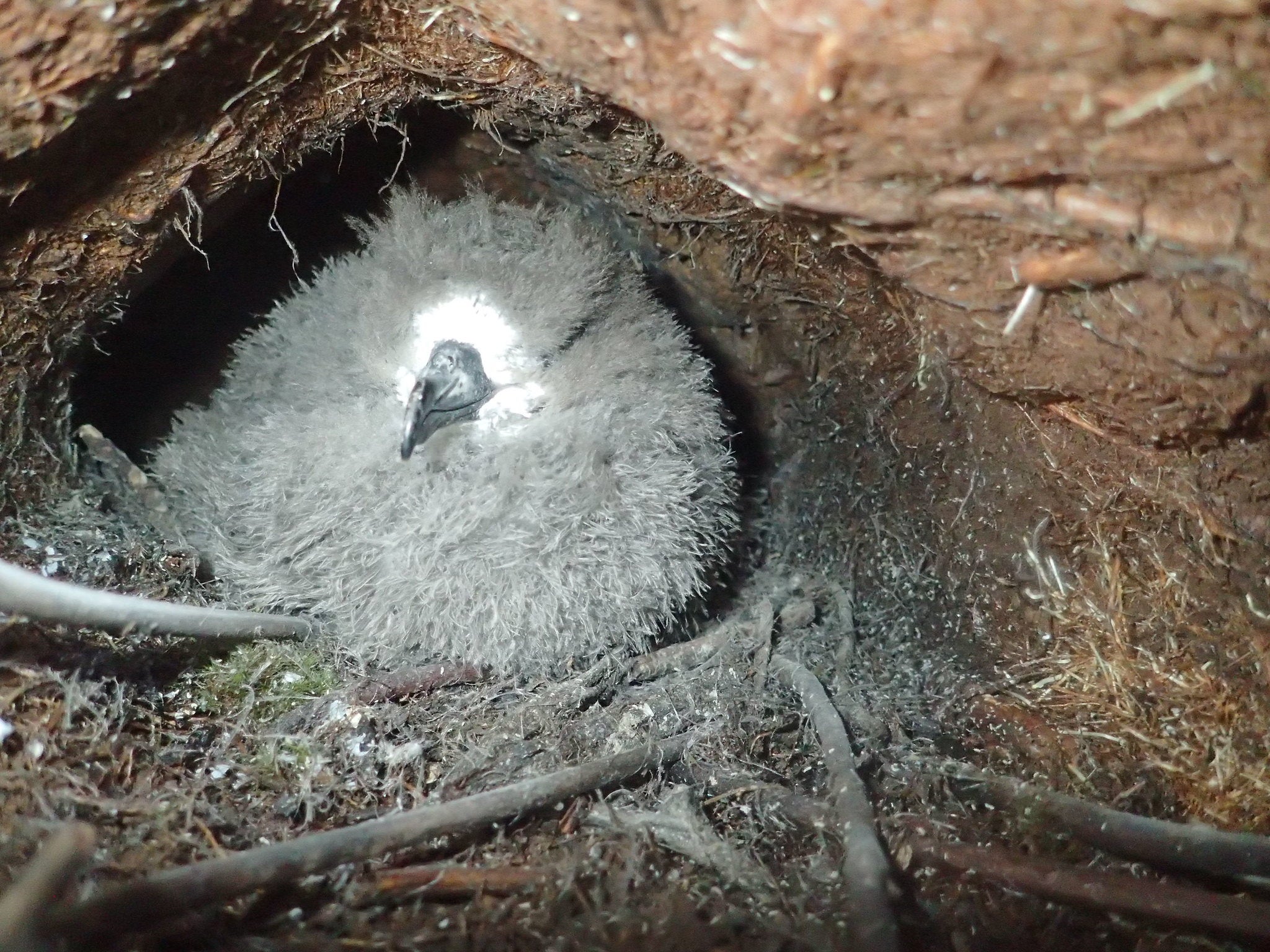Second Lawsuit Filed to Protect Hawaiian Petrels at Maui’s Grand Wailea Resort
Two years after the parties reached a settlement agreement, lights at the luxury resort continue to harm Hawaiian petrel chicks migrating out to sea
Contact
A coalition of conservation groups today filed a second lawsuit to protect Hawaiian petrels (ʻuaʻu) from dangerous lights used by the Grand Wailea Resort on Maui. Hawaiian petrels are protected as an endangered species under the Endangered Species Act. Today’s lawsuit was filed by Earthjustice on behalf of Conservation Council for Hawaiʻi and the Center for Biological Diversity.
Two years ago, the groups finalized a settlement agreement with the resort requiring it to implement lighting modification measures to minimize harm to endangered Hawaiian petrels navigating between breeding colonies at Haleakalā and the ocean. However, migrating birds continue to be attracted to, and harmed by, the resort’s artificial lights, as documented by the resort’s own monitors.
“Two years ago, we agreed to take a wait-and-see approach to assess whether lighting changes at the resort could stop the Grand Wailea from continuing to harm critically endangered petrels, but it didn’t,” said Maxx Phillips, Hawai‘i director at the Center for Biological Diversity. “We’re heading back to court to protect our native seabirds from the Grand Wailea’s destructive and illegal conduct.”
For more than a decade, bright lights at the Grand Wailea have disoriented Hawaiian petrel fledglings leaving their nests and migrating out to sea. Since the settlement was reached in October 2022, three grounded fledglings have been discovered at the resort, including one that broke its wing after colliding with a wall.
Because of the difficulty in finding and recovering grounded seabirds, it is likely that the resort’s lights grounded twice this number of birds during the 2022 and 2023 fledging seasons. Fledglings that are not discovered die from dehydration, starvation, predation, and injuries. Today’s lawsuit aims to curtail the resort’s ongoing, illegal harm to Hawaiian petrels.
“It is totally unacceptable for the Grand Wailea to prioritize its corporate profits over the wellbeing of our native seabirds,” said Jonee Peters, Executive Director of Conservation Council for Hawai‘i. “Hawaiian petrels have great cultural significance, helping guide our ancestors to find fish to feed their families. We need to do everything we can to ensure they are around for future generations.”
The Grand Waliea is required by the Endangered Species Act to obtain a permit from the U.S. Fish and Wildlife Service that would allow the resort to use its lights if resort officials implement a plan that minimizes and mitigates harm to the Hawaiian petrels. Despite a formal demand that the resort secure the required permit, the Grand Wailea continues to operate in violation of the law.
“The Endangered Species Act flatly prohibits the Grand Wailea from harming a single Hawaiian petrel unless it first secures and then complies with a permit to ensure its activities will not push the species closer to extinction,” said Earthjustice attorney Leinā‘ala Ley. “The Grand Wailea has been violating that prohibition year after year, for over a decade. We’re asking the federal court to put an end to these flagrant violations.”
Today’s lawsuit was filed in the federal district court in Honolulu.
Background
The Hawaiian petrel, or ʻuaʻu, is a native endangered seabird protected under the federal Endangered Species Act and protected by Hawai‘i state law. The ‘ua‘u travels thousands of miles across the Pacific to forage for squid and other marine life. Hawai‘i is the only place in the world where the ‘ua‘u breeds, with adults returning to nest at the same site where they fledged after spending the first six years of their lives at sea. The largest surviving nesting colony occurs on the volcanic slopes of Haleakalā, above the Grand Wailea Resort, where the birds burrow in the rocky soil.
Fledgling ‘ua‘u leave their nests for their first flight to the sea from mid-September to mid-December. Some birds are attracted to and disoriented by artificial lights, circling the lights until they fall to the ground from exhaustion or strike nearby structures. Once grounded, it is impossible for ‘ua‘u to take flight from low-lying coastal properties like the Grand Wailea, leaving them highly vulnerable to predators, dehydration, and starvation unless discovered and rescued by humans. Rescued chicks have worse survival outcomes than their counterparts who are able to reach the ocean without falling victim to light attraction.

Additional Resources
About Earthjustice
Earthjustice is the premier nonprofit environmental law organization. We wield the power of law and the strength of partnership to protect people's health, to preserve magnificent places and wildlife, to advance clean energy, and to combat climate change. We are here because the earth needs a good lawyer.